A lifeguard is an emergency service worker.
Contents
Lifeguard or Life Guard may also refer to:
A lifeguard is an emergency service worker.
Lifeguard or Life Guard may also refer to:

Dragoons were originally a class of mounted infantry, who used horses for mobility, but dismounted to fight on foot. From the early 17th century onward, dragoons were increasingly also employed as conventional cavalry and trained for combat with swords and firearms from horseback. While their use goes back to the late 16th century, dragoon regiments were established in most European armies during the 17th and early 18th centuries; they provided greater mobility than regular infantry but were far less expensive than cavalry.

Jäger is a German military term referring to specific light infantry units.
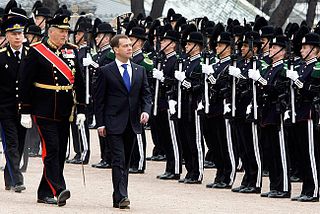
In some militaries, foot guards are senior infantry regiments. Foot guards are commonly responsible for guarding royal families or other state leaders, and they also often perform ceremonial duties accordingly, but at the same time are combat soldiers.
The Household Cavalry (HCAV) is a corps of the Household Division, made up of the two most senior regiments of the British Army; The Life Guards and The Blues and Royals. They have taken part in every major conflict since 1660. These regiments are divided between the Household Cavalry Regiment stationed at Wing Barracks in Wiltshire, with an armored reconnaissance role, and the ceremonial mounted unit, the Household Cavalry Mounted Regiment, garrisoned at Hyde Park Barracks in London. Both the HCMR and HCR are made up of elements of the Life Guards and the Blues and Royals. The Household Cavalry is part of the Household Division and is the King's official bodyguard. Although the Household Cavalry Regiment is armoured, it is not part of the Royal Armoured Corps, being assigned to the Household Division.

The Royal Danish Army is the land-based branch of the Danish Armed Forces, together with the Danish Home Guard. For the last decade, the Royal Danish Army has undergone a massive transformation of structures, equipment and training methods, abandoning its traditional role of anti-invasion defence, and instead focusing on out of area operations by, among other initiatives, reducing the size of the conscripted and reserve components and increasing the active component, changing from 60% support structure and 40% operational capability, to 60% combat operational capability and 40% support structure. When fully implemented, the Danish army will be capable of deploying 1,500 troops permanently on three different continents continuously, or 5,000 troops for a shorter period of time, in international operations without any need for extraordinary measures such as parliamentary approval of a war funding bill.
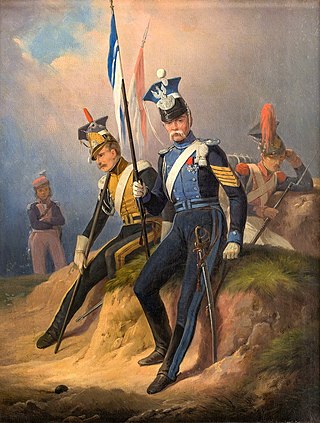
Uhlan is a type of light cavalry, primarily armed with a lance. The uhlans started as Lithuanian irregular cavalry, that were later also adopted by other countries during the 18th century, including Poland, France, Russia, Prussia, Saxony, and Austria-Hungary. The term "lancer" was often used interchangeably with "uhlan"; the lancer regiments later formed for the British Army were directly inspired by the uhlans of other armies.
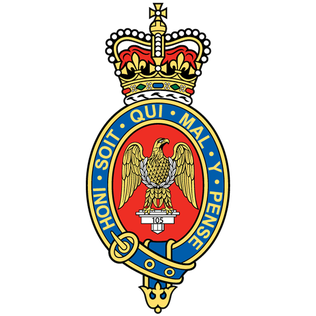
The Blues and Royals (RHG/D) is a cavalry regiment of the British Army, part of the Household Cavalry. The Colonel of the Regiment is Anne, Princess Royal. It is the second-most senior regiment in the British Army.
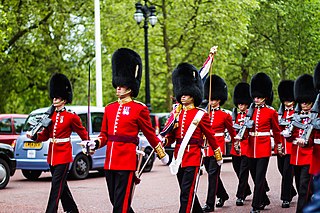
The King's Guard are sentry postings at Buckingham Palace and St James's Palace, organised by the British Army's Household Division. The Household Division also mounts sentry postings at Horse Guards, known as the King's Life Guard.

A bearskin is a tall fur cap derived from mitre caps worn by grenadier units in the 17th and 18th centuries. Initially worn by only grenadiers, bearskins were later used by several other military units in the 19th century. The bearskin cap continued to see use in battle during the mid-19th century, although by the 20th century, it was only used for parade dress. In the 21st century, the bearskin cap is retained by select military units as a prominent element of their ceremonial and full dress uniforms.

The Royal Life Guards is a mechanized infantry regiment of the Danish Army, founded in 1658 by King Frederik III. The primary task is to provide a number of soldiers from the Guard Company to serve as a guard/ceremonial unit to the Danish monarchy, while training the Royal Guards for various functions in the mobilisation force. Until its disbandment, the Royal Horse Guards, served the role as the mounted guard/ceremonial unit, afterwards the role was taken over by Guard Hussar Regiment Mounted Squadron. During the time period 1684–1867, the Royal Life Guards were called The Royal Foot Guard, in order to distinguish between the regiment and the Royal Horse Guards.
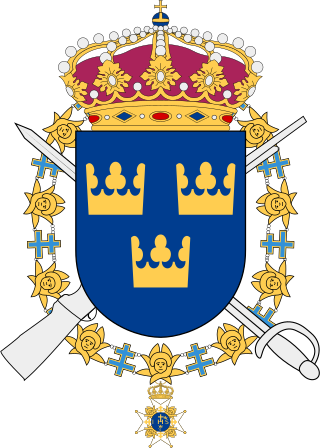
The Life Guards is a combined Swedish Army cavalry/infantry regiment. Its responsibilities include the defence of Stockholm as well as provision of the royal guard of honour for the King of Sweden and the Stockholm Palace. With traditions dating from 1521, the regiment is one of the oldest military units in continuous operational existence in the world. It was established in its present form in July 2000, following a merger of the Svea Life Guards and the Life Guard Dragoons. Headquarters are mainly located in Brunna north of Kungsängen in Upplands-Bro Municipality and at the "Cavalry Barracks 1" in central Stockholm.

A royal guard or the palace guard, is a group of military bodyguards, soldiers or armed retainers responsible for the protection of a royal family member, such as a king or queen, or prince or princess. They often are an elite unit of the regular armed forces, or are designated as such, and may maintain special rights or privileges.

Public duties are performed by military personnel, and usually have a ceremonial or historic significance rather than an overtly operational role.
1st Cavalry, 1st Cavalry Division, 1st Cavalry Brigade, 1st Cavalry Regiment or 1st Cavalry Battalion may refer to:
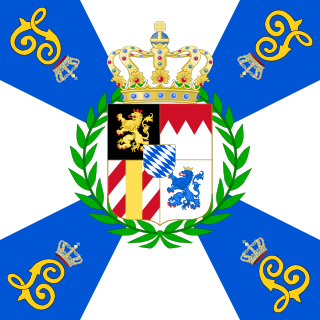
The Bavarian Army was the army of the Electorate (1682–1806) and then Kingdom (1806–1918) of Bavaria. It existed from 1682 as the standing army of Bavaria until the merger of the military sovereignty of Bavaria into that of the German State in 1919. The Bavarian Army was never comparable to the armies of the Great Powers of the 19th century, but it did provide the Wittelsbach dynasty with sufficient scope of action, in the context of effective alliance politics, to transform Bavaria from a territorially-disjointed small state to the second-largest state of the German Empire after Prussia.
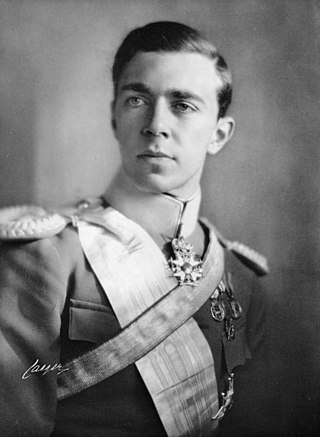
Prince Gustaf Adolf, Duke of Västerbotten was a Swedish prince who for most of his life was second in the line of succession to the Swedish throne. He was the eldest son of Gustaf VI Adolf, who was crown prince for most of his son's life and ascended the Swedish throne three years after his son's death. The current king, Carl XVI Gustaf, is Prince Gustaf Adolf's son. The prince was killed on 26 January 1947 in an airplane crash at Kastrup Airport, Copenhagen, Denmark.

The Royal Horse Guards was a Cuirassier regiment in the Royal Danish Army which was founded on orders from King Frederick III in January 1661 and discontinued on 31 May 1866. It served both as Royal Guards and as a front line cavalry unit.
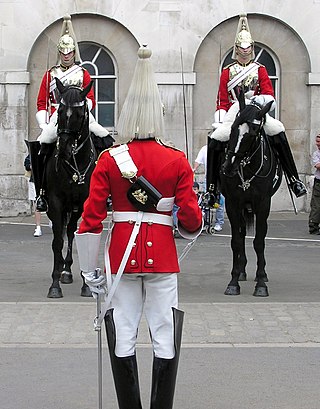
A life guard is a military unit charged with protecting a high-ranking individual, such as a monarch.